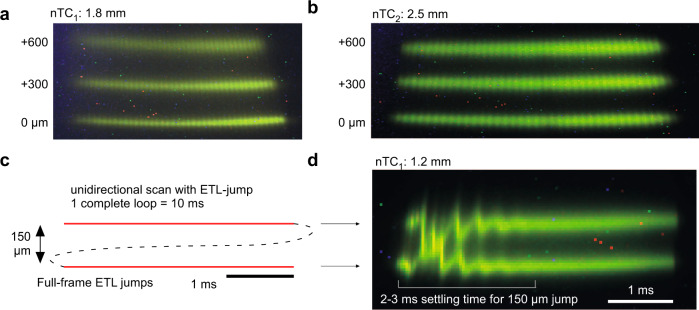Fig. 4
a, b, Scan-profiles with the electrically tunable lens (ETL) “flat” (zero input current, lowest profile) and engaged to achieved axially elevated scan planes at +300 and +600 µm (middle, upper profiles, respectively) in nTC1 (a) and nTC2 (b) configuration, as indicated. Associated size-changes in the effective full field of view were generally <5% (compare top and bottom planes). In each case, axial-shifts required <25% unidirectional peak current on the ETL which in turn facilitated rapid ETL-settling times: c, d, Schematic (c) and measured (d) axial jumps and settling time: the ETL was programmed to iteratively focus up and down by 150 µm at each end of two long (5 ms) scan lines, as indicated. This enabled a direct read-out of ETL settling at each line-onset (oscillations in d). For the 150 µm jumps shown, oscillations decayed below detectability within 2–3 ms. For corresponding readouts of the ETL-position signal, see Fig. S3.

